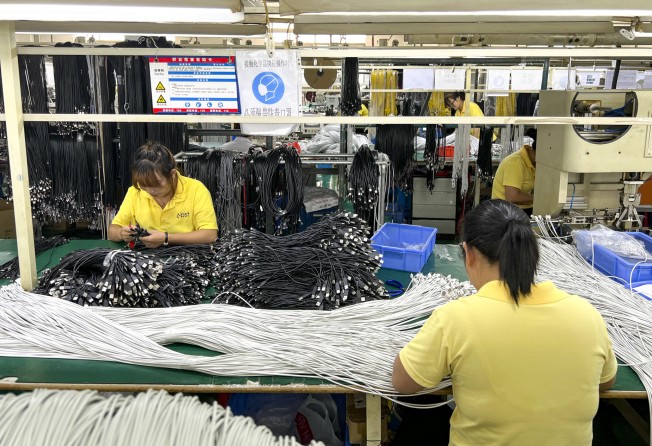
Shenzhen wants to double semiconductor output by 2025 under new plan to boost tech industry
- Shanghai-based Semiconductor Manufacturing International Corp, China’s biggest chip maker, is currently building a new wafer fabrication plant in Shenzhen
- In April, China’s chip output dropped to a two-year low, declining 12.1 per cent year on year to 25.9 billion units

China’s southern tech hub of Shenzhen wants to double the value of its existing chip sector within three years as part of a broader push to improve the country’s self-sufficiency in core technologies.
Shenzhen, known as China’s Silicon Valley, announced a plan to build “an influential cluster” for the semiconductor industry by 2025, including the development of leading national capabilities in manufacturing, packaging and testing of chips.
By 2025, Shenzhen aims to develop a semiconductor industry that can bring in 250 billion yuan (US$37.5 billion) in annual sales, compared to the 110 billion yuan in revenue last year, according to an action plan jointly issued on Monday by the Shenzhen Development and Reform Commission and other local authorities.
The city aims to cultivate at least three integrated circuit design firms with annual sales of more than 10 billion yuan each, and three chip makers with 2 billion yuan revenue each.
Although Shenzhen is home to some of China’s biggest tech firms, including social media titan Tencent Holdings, telecoms giant Huawei Technologies Co, and drone leader DJI, it lags behind Shanghai and Beijing when it comes to semiconductor design and production.
Xie Ruifeng, general manager of semiconductor research firm ICwise, said Shenzhen’s goals, including its 250 billion yuan sales target, were “achievable but will take a lot of effort”.
“Shenzhen has a few advantages in developing the semiconductor industry, including its proximity to downstream applications, rich resources for innovation, solid government funding and an active private capital market,” Xie said. “However, the city is still lacking in local wafer fabrication capabilities, which will be a main focus for Shenzhen’s efforts.”
Shanghai-based Semiconductor Manufacturing International Corp, China’s biggest chip maker, is currently building a new wafer fabrication plant in Shenzhen, which is expected to be completed this year.
The company previously said it was working with the Shenzhen government to invest US$2.35 billion into the project, with the aim of producing 40,000 12-inch wafers per month using mature nodes such as 28-nanometre or higher.
Under the plan announced Monday, Shenzhen’s local semiconductor industry would substantially increase its production line capacity and aim to improve its self sufficiency ratio by using fewer imports. In addition, the city plans to build at least four industrial parks for the semiconductor industry over the next three years.
The action plan noted that Shenzhen is currently one of China’s main centres for semiconductor sourcing, applications and design, but that the industry’s small size and reliance on foreign tech such as software, production equipment and key materials were challenges to be overcome.
To help achieve the goals, the Shenzhen government will allocate more funding to the IC industry and support the development of key enterprises and start-ups in the sector. Those measures will be on top of existing national tax incentives for chip companies.

Shenzhen’s latest efforts come amid the country’s nationwide drive to improve self-sufficiency in strategic technologies such as semiconductors, amid escalating tech tensions with Washington. The industry is also experiencing a surge in demand for more mature chips from downstream users such as carmakers and home appliance manufacturers, made worse by stringent Covid-19 policies across China that have disrupted production.
In April, China’s chip output dropped to a two-year low, declining 12.1 per cent year on year to 25.9 billion units, according to data released by the National Bureau of Statistics.
Shenzhen’s semiconductor ambitions are part of the city’s plan to boost its tech hub status, according to government guidelines on making advanced manufacturing a core driver of the local economy.
The guidelines, issued on Monday, identified 20 sectors – from semiconductors and telecommunications to robotics and biotech – as key strategic emerging industries that would see their added value grow to more than 1.5 trillion yuan by 2025.